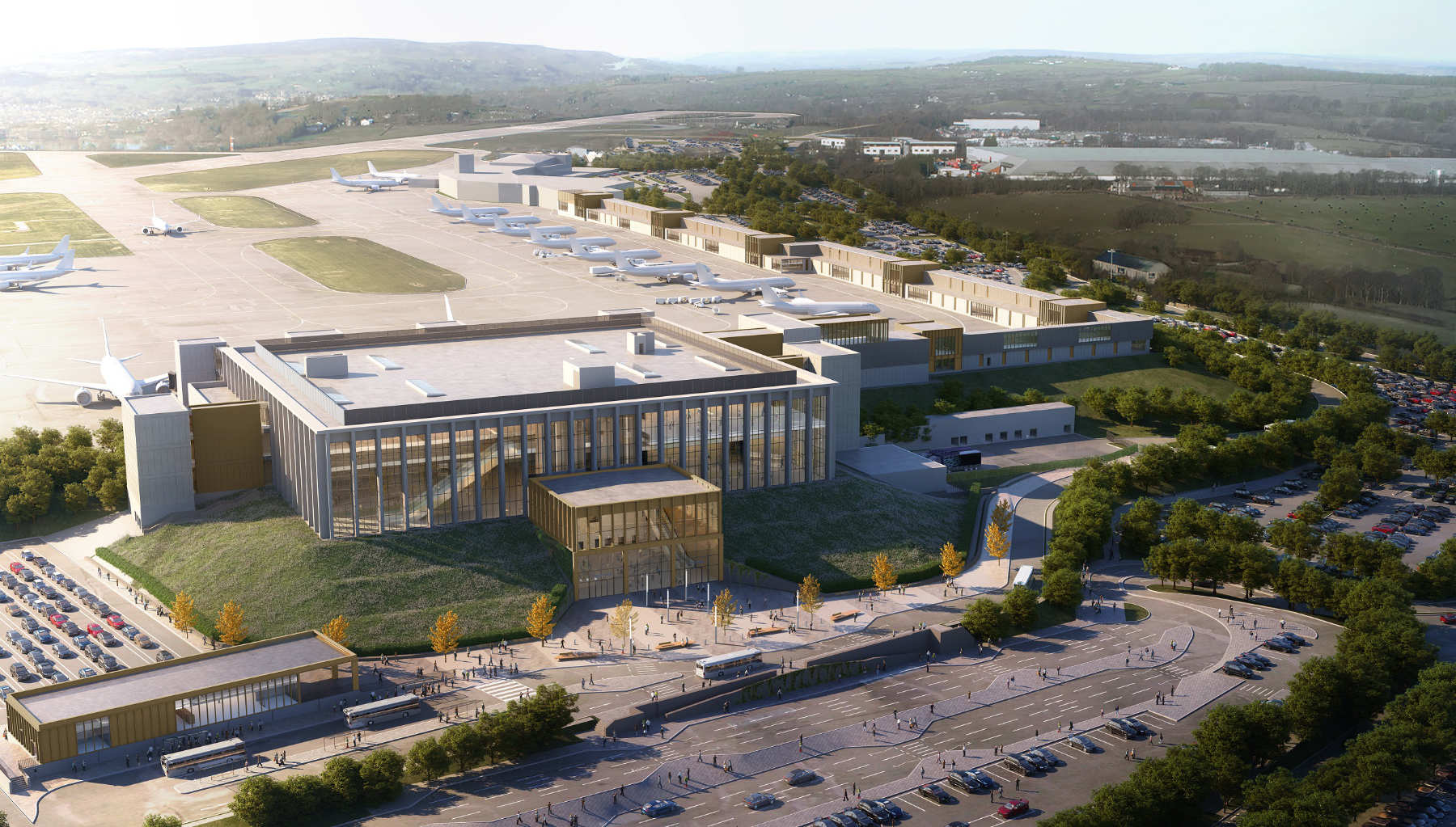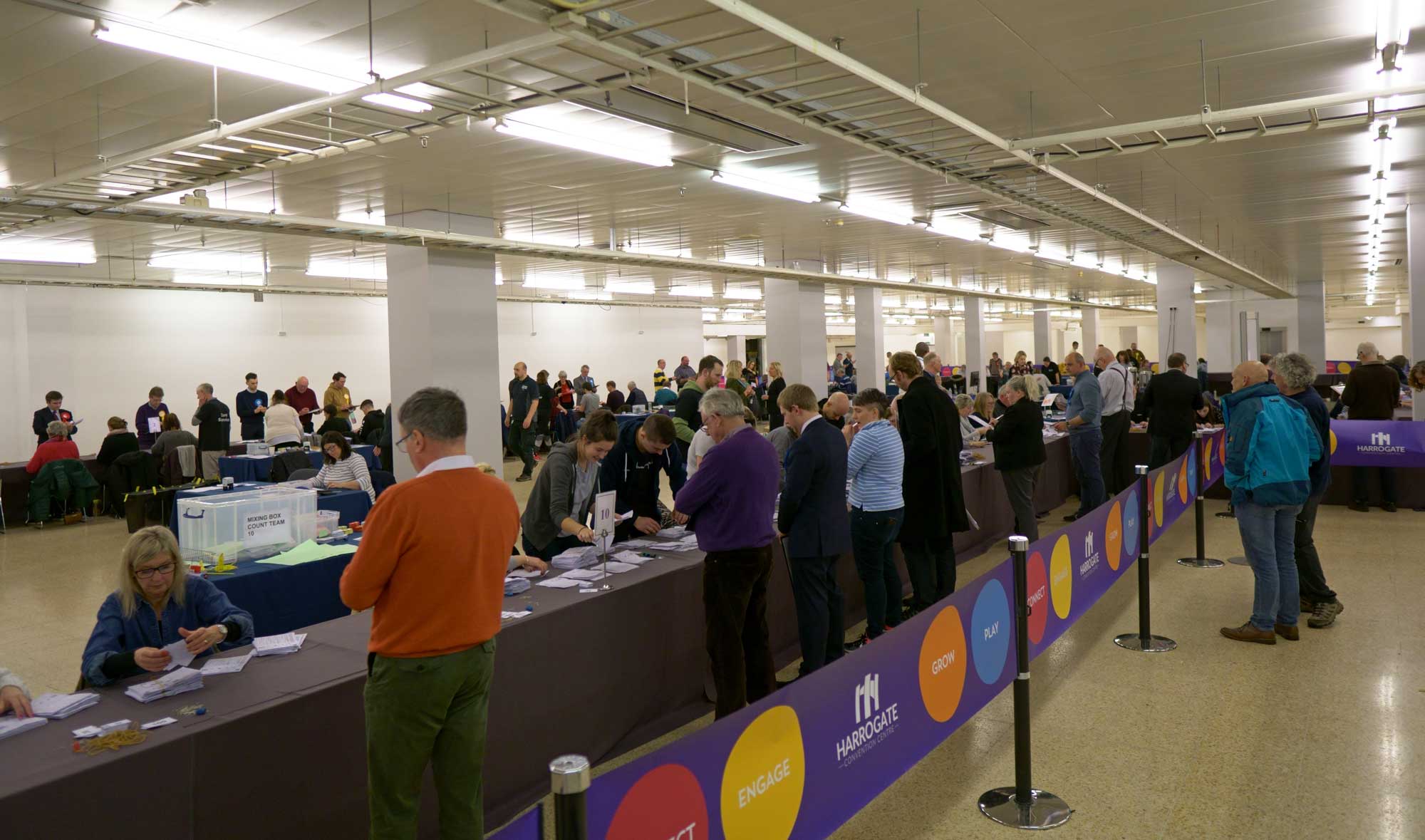Airport campaigners welcome withdrawal of LBA’s night flight applications and vow to fight on against new applications.
The Group for Action on Leeds Bradford Airport (GALBA) has welcomed today’s announcement that the airport has withdrawn its controversial night flight applications. However, LBA has submitted four new applications that also aim to increase the number of flights at night.
Letter from Leeds-Bradford Airport CEO:
GALBA say theywill carefully assess the new applications and has vowed to continue its fight to stop any extra night flights. The campaigners are grateful that Leeds City Council issued a call for evidence when the original applications were made, as that allowed GALBA to provide important information to the Council. They have also called on the Council to open a new consultation process so that the public can respond to the new CLEUD applications.
Chris Foren, chair of GALBA, said:
We were always confident that LBA’s CLEUD applications should be thrown out. It looks like the airport agrees with us! LBA’s boss has consistently shown that he cannot be trusted to stick to the night flight rules. Now it turns out his CLEUD applications were misleading and a waste of Leeds City Council’s time and money.
However, we are aware that LBA has submitted four new CLEUD applications. There is a lot of information to analyse and that’s exactly what we will do. GALBA will not give up our fight to protect the health of people living under the flightpath and we will do everything possible to protect our climate. On the same day that world leaders at the COP28 conference announced they would take steps to reduce climate damaging greenhouse gases, LBA announced yet another attempt to increase those gases. They should be ashamed of themselves.
We call on Leeds City Council to open a new consultation process that allows enough time for the public to read and respond to LBA’s new applications. The time allowed for consultation should take into account the Christmas holiday season. The public should not be stymied by new applications being made just before the Christmas break.
Below is a lengthy Q&A from LBA
Why has LBA submitted new CLEUD applications?
Following Leeds City Council’s (LCC) decision to request factual evidence from third parties, LCC has received a number of queries and information challenging the data referred to in LBA’s CLEUD applications. LBA has analysed this additional information and decided to withdraw its previous 5 CLEUD applications, and to replace them with 4 new CLEUD applications supported by a a new statement and new supporting data. The substance of the 4 CLEUD applications remains the same as the previous 5 CLEUD applications.
What additional information has LBA submitted?
Following further detailed analysis of historic night flight movement data for both QC 0.25 & QC 1 aircraft between the years 2008 – 2019, a number of aircraft QC ratings have been updated after having being cross-referenced with additional data sources. Additionally, clarifications to the original data have been made to ensure all flights are listed as local time rather than UTC (Coordinated Universal Time) and correctly categorised according to either winter or summer seasons and day time or night time periods.
The analysis has identified a larger number of flights that have historically breached both the QC 0.25 and QC 1 flight restrictions over a period greater than 10 years. It has also highlighted inaccuracies within information historically submitted by LBA to LCC.
Why has this information come to light now?
The LCC investigation into the number of night-movements at LBA in Summer 2022 highlighted that the controls and reporting of night movements at LBA was deficient. Some of these controls and processes date back to the 1990s and also impacted LBA reporting during the period from 2008 to 2019.
LBA has had to go back to original source data for movement information and externally verified information for noise rating and QC count, to recreate a corrected list of all night-time movements during the period 2008 to 2019 with the correct QC ratings.
How can LBA be sure the data is comprehensive and correct?
LBA recognises the questions this raises about the credibility of information provided. This is why LBA has performed such a granular level of analysis tied to verifiable data sources.
Aircraft movement data provided has been reconciled against reports previously provided to LCC to ensure that the original data is accurate.
Aircraft type and QC rating information have been reconciled on an individual aircraft basis using the Civil Aviation Authority G-Info database, which records the official certification information for each aircraft and similar systems from other national regulators.
To assist LCC in verifying the data, LBA has provided a complete listing of all flights to and from LBA from 2008 to 2019, and certification data for each of the aircraft as well as historical listings showing the Aircraft Data Tables that were historically used to generate QC rating information.
Did LBA breach its night movement restrictions in 2023?
Based on LBA’s understanding of the current planning conditions, LBA did not breach the night movement limit in Summer 2023. Aircraft movements subject to the night movement restriction totalled 2,644 in Summer 2023 against a limit of 2920.
There were an additional 848 movements not subject to the night movement restrictions, including 266 movements which were delayed from the day-time period, 29 propeller aircraft, 4 light jet aircraft and 549 other unrestricted movements (including QC1 departures and QC0.25 aircraft movements).
Total movements recorded were 3492, 175 lower than in Summer 2022 due to movement of some morning flights out of the night-time period to comply with the planning conditions.
In Summer 2022 LBA had 19 departures of QC0.25 rated aircraft. In Summer 2023 this number increased to 542. This increase in quieter, more fuel efficient aircraft was a direct result of LBA working to comply with the planning conditions following on from the identification of a breach of night movements in Summer 2022.
In addition to the additional questions above, the version of this Q&A from 26 September 2023 has been updated to reflect updates in the status of the CLEUD applications as set out below.
Is Leeds Bradford Airport trying to operate more night flights?
No, LBA has not submitted an application for more night flights and has no intention to change the planning conditions around night flights. LBA is simply attempting to clarify what our current permission, written nearly 30 years ago, means today.
Contrary to speculation, LBA is not seeking to change the planning conditions that apply to the airport. The CLEUD applications will provide a determination as to whether a use is legal, and clarify how the existing planning permission should operate. This will allow LBA to ensure that it remains compliant with the conditions in a complicated and changing landscape.
Some of the statements we have seen suggest that the granting of these CLEUD applications would lead to a huge increase in the number of night flights or indeed “unlimited” night flights. This is absolutely not the case. If issued, the CLEUDs would allow LBA to continue to operate in the same way that it operates today.
Why has LBA applied for Certificates of Lawfulness for Existing Use or Development (CLEUDs)?
LBA has applied for four CLEUDs relating to the planning conditions contained in the 2007 planning approval for the airport, which itself was an amendment to a 1994 planning approval which originally permitted 24-hour operations at LBA.
The current conditions were originally written nearly 30 years ago and have not been updated since. In the intervening years, the night movement scheme applying to London airports, on which the conditions are largely based, has evolved significantly and aircraft technology has changed. As a result, it is not clear how to interpret and apply those conditions today. Many other airports work in accordance with a plan which is regularly reviewed and updated. LBA does not have this and unfortunately is working with a mechanism which does not allow for reviews or updates.
The purpose of a CLEUD application is to clarify the correct interpretation of an existing permission and recent usage, to determine the scope of existing lawful use. A CLEUD cannot change the scope of an existing permission. Any such change would require a variation to the existing permission or a new planning application. The determination of the CLEUD application is therefore not one which requires a judgement as to the ‘planning merits’ of approval or refusal, in the way in which a planning application or application to vary a permission would. It is a technical legal evaluation of the facts, and of the terms of the existing permission.
Why has LBA chosen to pursue this process that does not allow for public comment? Is it anti-democratic?
The CLEUD process is the process as set down in the Town & Country Planning Act 1990 to allow local planning authorities to make decisions on the interpretation of planning conditions. LBA has not chosen the CLEUD process in order to avoid public comment via some ‘more democratic’ process. The CLEUD process is simply the legal route prescribed to clarify lawful use under an existing planning permission.
The Town & Country Planning Act 1990 does not allow for public consultation, politics, opinions or any other external intervention in the CLEUD process, only the submission of evidence from third parties if that evidence is pertinent to establishing the facts.
What are the specific CLEUDs LBA has submitted?
Of the four CLEUD applications, two concern the correct interpretation of conditions that relate to:
the definition of “exempt aircraft”; and
the scope, in terms of aircraft noise classifications, of exemption for delayed flights and emergency landings.
The remaining two applications relate to the enforceability, as a result of more than 10 years of continuous operation, of two specific restrictions:
- the departure, during the night period, of aircraft with a noise Quota Count of 13; and,
- the arrival or departure, during the night period, of aircraft with a Quota Count of 0.254.
Why has LBA submitted these specific CLEUDs?
There is a specific planning condition restricting the departure of noisier, Quota Count 1 (QC1) rated, aircraft during the night period. Historically, LBA has not had mechanisms in place to restrict the operation of these aircraft for at least 15 to 20 years. As a result, aircraft with a QC1 rating have been departing LBA in an unrestricted manner since before 2007. A strict application of the planning condition now would mean that any further departures of aircraft in this classification would be in breach of the conditions. This would conflict with the right under planning law that has developed over the last 15 years to allow these aircraft to depart.
While it is true that these flights would not be subject to night movement restrictions if LBA’s interpretation of the planning conditions is correct, this does not mean that the airport would then seek to attract more QC1 rated aircraft and push them to operate during the night period. At most there have been 93 annual movements of QC1 aircraft in any year. In Summer 2023 there were 7 departures on QC1 rated aircraft.
Similarly, QC0.25 rated aircraft have been operating at LBA during the night period since at least 2007. In this case, the number of movements is in the several hundred per year range. A strict reading of the planning conditions would imply that only QC1 and QC0.5 rated aircraft are permitted to arrive at LBA during the night period, and only QC0.5 rated aircraft are permitted to depart. It is in the interest of LBA, airlines and residents that the quietest aircraft are used for night movements. As a result, LBA is seeking to ensure that the operation of QC0.25 aircraft during the night period does not represent a breach of the planning conditions.
What are LBA’s current night movements?
To give some context, about 90% to 95% of all LBA night movements are used by aircraft based at LBA. These are Jet2 and Ryanair aircraft. Jet2 operate 13 active lines of flying and four spare aircraft at LBA. All Jet2 aircraft based in LBA are Boeing 737 aircraft and QC0.5 rated on departure and either QC0.5 or QC1 rated on arrival. Out of a total fleet of just under 100 Boeing 737 aircraft, Jet2 have only two aircraft that are rated QC1 on departure. These aircraft are not based at LBA but do occasionally operate out of LBA for maintenance. This has resulted in two QC1 night movements by Jet2 this year, for which they were issued with two £2,000 penalties with funds being used for local community causes. Ryanair base two or three aircraft at LBA. Two of those aircraft are 737-800 aircraft that are subject to the night movement restrictions, and one is a 737MAX which is rated as QC0.25.
Wizz Air has also operated 5 departures of QC1 rated aircraft due to delayed departures of aircraft scheduled to depart during the day-time period. Wizz Air have also been issued with fines related to QC1 departures.
What is stopping LBA operating more night flights?
Putting aside planning restrictions, contrary to what some commentators have implied, there is not an unlimited supply of quieter aircraft that are waiting to come into LBA to increase night operations. LBA has operational capacity constraints during the 0600 to 0700 hour. We also have constraints over the number of aircraft parking spaces overnight. Whilst these constraints will be somewhat addressed over time with the airport’s regeneration proposals, these will provide only incremental growth over time, not significant and unlimited capacity to increase the number of overnighting aircraft.
LBA has no approval for increases in terminal capacity beyond the 2019 approval granted for an extension to the terminal building. This physical capacity provides an effective restriction against the unfettered growth of the airport in future. As the airport approaches that limit, a further full planning application to allow for increased terminal capacity would be required for growth. One of the requirements for that planning approval would be a new set of rules to govern night aircraft movements. Any ability to increase the level of night movements at LBA is therefore only effective up to the level of physical capacity of the airport.
What is the difference between the CLEUD applications and LBA’s application for Level 3 designation?
LBA was recently designated as a Level 3 (Coordinated) airport by the Secretary of State for Transport during the night period in British Summer Time. This is part of the package of actions proposed by LBA and agreed with Leeds City Council following their investigation into the number of night aircraft movements in Summer 2022 and is designed to provide greater control over the number of night movements at LBA. Level 3 designation will ensure that airlines comply with LBA’s operational restrictions or lose their rights to night movement slots. As a level 2 coordinated airport, LBA lacked the ability to enforce slot restrictions on airlines. The application therefore helps provide greater control over night flights.
Did LBA breach its night movement restrictions in 2022?
LBA accepted responsibility for the breach of the planning conditions relating to Summer 2022 and has complied with the Breach of Condition Notice issued by LCC. We have tightly managed the movements and reported those monthly to LCC. The limits in the conditions will continue to be in force regardless of the outcome of the CLEUD processes. However, there are important clarifications required about how particular activities and aircraft are treated under those conditions so that LBA can have certainty that it is complying with the conditions.







